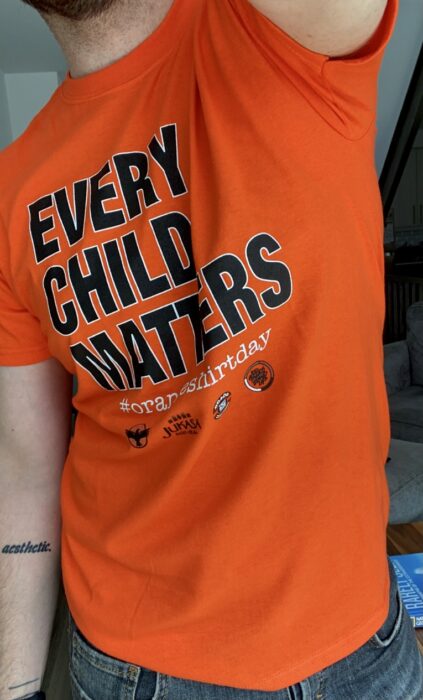
Text: Orange Shirt Day, and the National Day for Truth and Reconciliation, are both recognized on September 30. It is a day where the children who were sent to residential schools in Canada are honoured and we learn more about the true history behind those schools.
In Canada, the Indian residential school system was a network of boarding schools for Indigenous peoples. Attendance was mandatory from 1894 to 1947 and the last residential school closed in 1996. The network was funded by the Canadian government’s Department of Indian Affairs and administered by Christian churches.
“Two primary objectives of the residential schools’ system were to remove and isolate children from the influence of their home, families, traditions and cultures, and to assimilate into the dominant culture,” reads “An Overview of the Indian Residential School System” on anishnabek.ca. It is estimated that more than 150,000 Indigenous, Inuit, and Métis children attended Indian residential school.
Where did the idea of wearing an orange shirt in support come from and how did the day become a holiday?
Phyllis Webstad was given an orange shirt by her grandmother for her very first day of school at St. Joseph’s Mission residential school in British Columbia. The “orange shirt” in Orange Shirt Day refers to that shirt. When Phyllis got to school, her clothes were taken away, including her new orange shirt that was never returned. Phyllis told CBC news that the colour orange has always reminded her of her experiences at residential school, saying, “How my feelings didn’t matter, how no one cared and I felt like I was worth nothing. All of us little children were crying and no one cared.”
Phyllis wants to convey the message that every child matters — every day. She started Orange Shirt Day in 2013 to educate people about residential schools and to fight bullying and racism.
The orange shirt is now used as a symbol of the forced assimilation of Indigenous children that the residential school system enforced. The day was made into a statutory holiday by the Parliament of Canada in 2021.
According to the Canadian Encyclopedia, the Truth and Reconciliation Commission issued its report in December 2015. It stated that residential schools represented cultural genocide. It stated 94 Calls to Action, and among them was the establishment of a national holiday to commemorate the horrors of the schools and to help in healing.
In March 2019, the House of Commons passed a bill designating Sept. 30 as an annual National Truth and Reconciliation Day.








